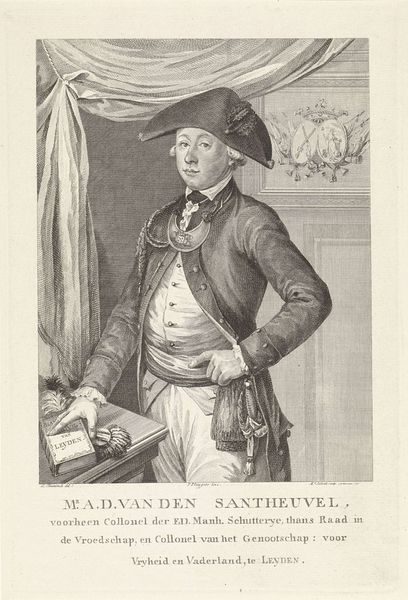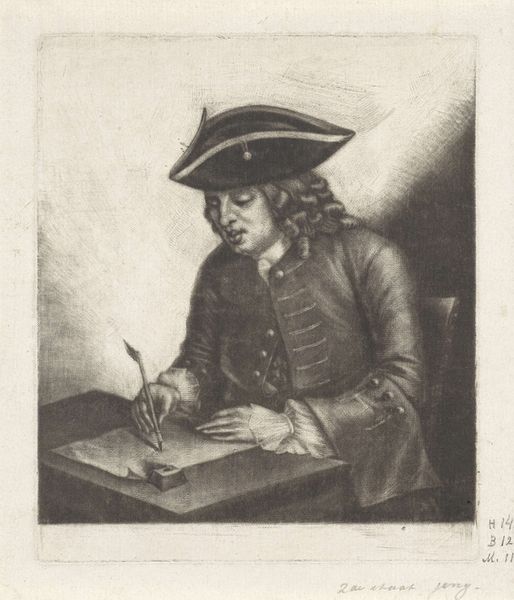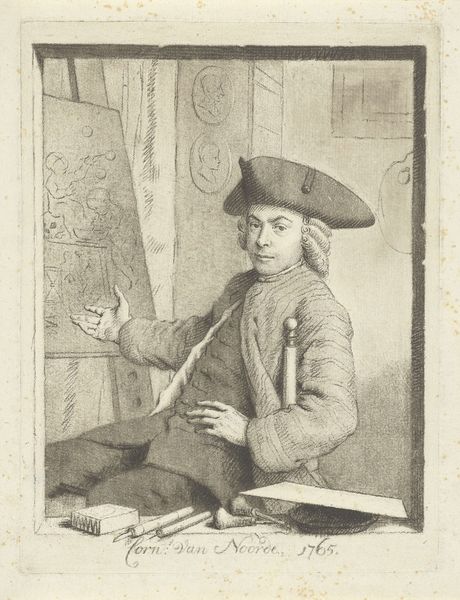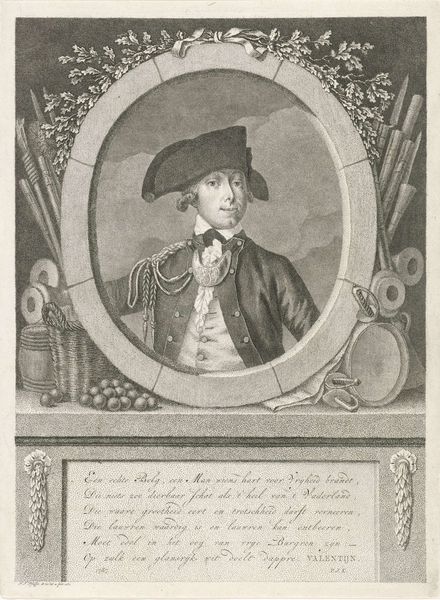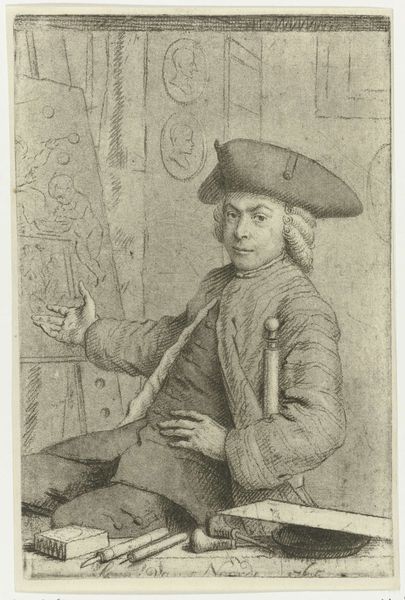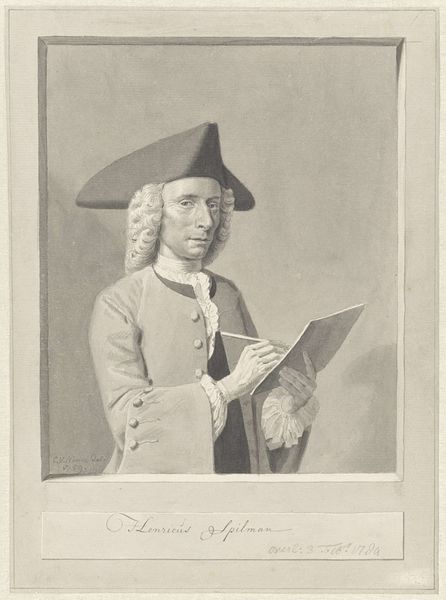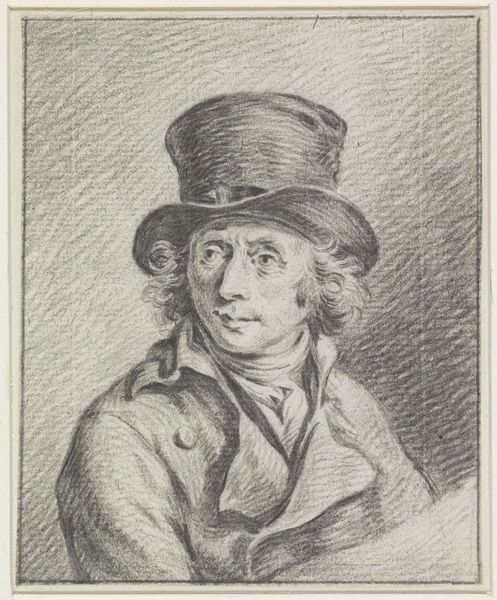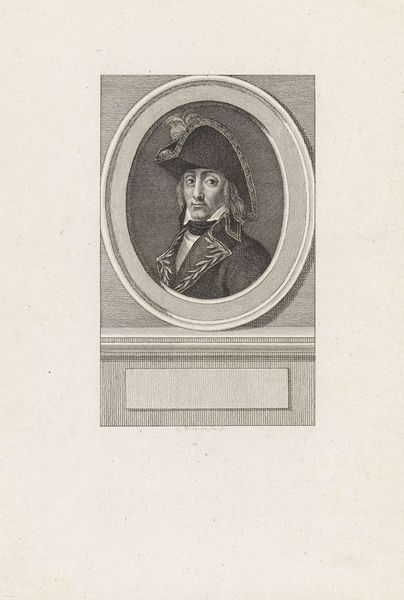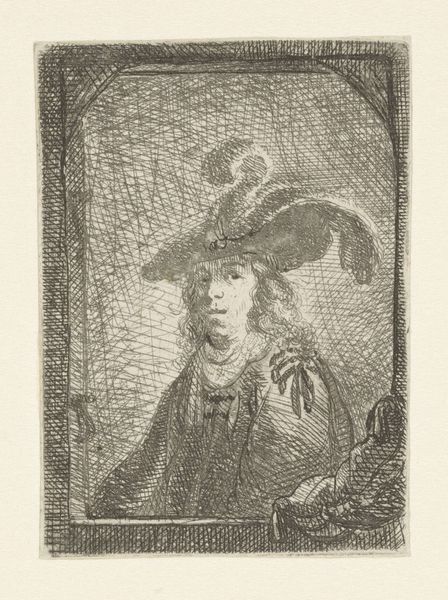
Zelfportret van Hendrik Kuipers, zittend achter een tafel, tekenend 1790 - 1800
0:00
0:00
drawing, pencil
#
portrait
#
pencil drawn
#
drawing
#
neoclacissism
#
self-portrait
#
pencil sketch
#
charcoal drawing
#
pencil drawing
#
pencil
#
portrait drawing
#
academic-art
Dimensions: height 288 mm, width 221 mm
Copyright: Rijks Museum: Open Domain
Editor: This is Hendrik Kuipers’ self-portrait from sometime between 1790 and 1800. It's a drawing, done with pencil. I’m really struck by how staged it feels – he’s posed very deliberately at his desk. What’s your take on this piece? Curator: Well, the "staged" quality you identify speaks volumes about the social context of art in the late 18th century. This isn't just a man drawing; it’s a carefully constructed image meant to project a certain persona, what could that be? Editor: Perhaps portraying himself as an intellectual, involved in artistic pursuits? Curator: Exactly. The self-portrait became a powerful tool for artists to control their public image. He's placing himself within the context of artistic production, but also within a specific social stratum. Note the clothing, the implied wealth, and how those choices were political? Editor: So, his self-representation through the portrait reinforces his social standing and conveys a certain power? Curator: Precisely. Consider the art world then – who had access, whose voices were amplified? The self-portrait like this, it’s an act of asserting agency within those power structures, a conscious performance for a public, even imagined, audience. Editor: That’s a fascinating point. I hadn’t considered the socio-political implications of simply creating a self-portrait like this. Curator: It makes you think about how artists today are shaping narratives around themselves, and who gets to control those narratives, doesn't it? Editor: Definitely, it really opens my eyes to seeing these historical works in the context of their social environments.
Comments
No comments
Be the first to comment and join the conversation on the ultimate creative platform.

